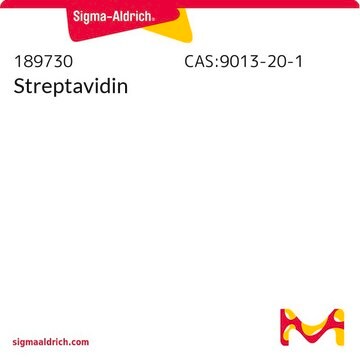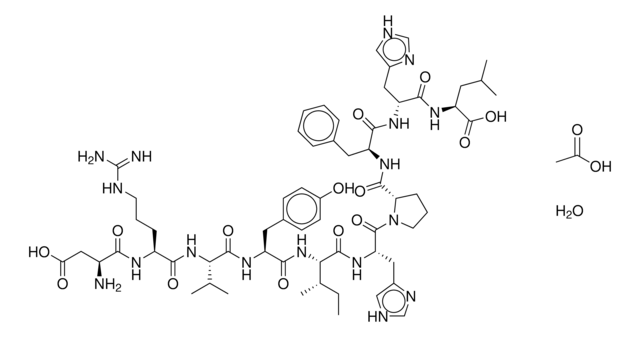S6940
SigmaScreen™ Streptavidin High Capacity Coated Plates
96 well clear
Sign Into View Organizational & Contract Pricing
All Photos(1)
About This Item
UNSPSC Code:
12352204
NACRES:
NA.83
Recommended Products
Looking for similar products? Visit Product Comparison Guide
General description
SigmaScreen Streptavidin coated high capacity plates utilize a proprietary coating technology which provides substantially greater biotin binding capacity than standard Streptavidin or ExtrAvidin coated plates. This clear, 96-well plate has a format of breakable 8-well strips on a single-well holding frame, and has a binding capacity of ≥ 15 pmol/well. Streptavidin coated high capacity plates provide a platform which allows the captured protein to be eluted for post-capture analysis by various methods such as MALDI, ICAT or SDS-PAGE.
Legal Information
SigmaScreen is a trademark of Sigma-Aldrich Co. LLC
Storage Class
11 - Combustible Solids
wgk_germany
WGK 2
flash_point_f
Not applicable
flash_point_c
Not applicable
ppe
Eyeshields, Gloves, type N95 (US)
Certificates of Analysis (COA)
Search for Certificates of Analysis (COA) by entering the products Lot/Batch Number. Lot and Batch Numbers can be found on a product’s label following the words ‘Lot’ or ‘Batch’.
Already Own This Product?
Find documentation for the products that you have recently purchased in the Document Library.
Lu Li et al.
Analytica chimica acta, 886, 123-132 (2015-09-01)
A method for fabrication of multiplexed optical coding nanobeads (MOCNBs) was developed by hybridizing three types of coding DNAs labeled with different dyes (Cy5, FAM and AMCA) at precisely controlled ratios with biotinylated reporter DNA modified to magnetic streptavidin-coated nanobeads
Hong-Sheng Lim et al.
Journal of immunology (Baltimore, Md. : 1950), 195(11), 5432-5439 (2015-10-27)
Optimal T cell activation typically requires engagement of both the TCR and costimulatory receptors, such as CD28. Engagement of CD28 leads to tyrosine phosphorylation of its cytoplasmic region and recruitment of cytoplasmic signaling proteins. Although the exact mechanism of CD28
Román González-Prieto et al.
Cell reports, 34(4), 108691-108691 (2021-01-28)
In contrast to our extensive knowledge on covalent small ubiquitin-like modifier (SUMO) target proteins, we are limited in our understanding of non-covalent SUMO-binding proteins. We identify interactors of different SUMO isoforms-monomeric SUMO1, monomeric SUMO2, or linear trimeric SUMO2 chains-using a
Jie Wang et al.
Nature, 569(7757), 509-513 (2019-05-10)
A universal gain-of-function approach for selective and temporal control of protein activity in living systems is crucial to understanding dynamic cellular processes. Here we report development of a computationally aided and genetically encoded proximal decaging (hereafter, CAGE-prox) strategy that enables time-resolved
Yasmin ElTahir et al.
BMC molecular and cell biology, 20(1), 55-55 (2019-12-01)
Brucella is a facultative intracellular pathogen responsible for zoonotic disease brucellosis. Little is known about the molecular basis of Brucella adherence to host cells. In the present study, the possible role of Bp26 protein as an adhesin was explored. The
Articles
Protein modifications are crucial for disease study. Analysis methods are key.
Our team of scientists has experience in all areas of research including Life Science, Material Science, Chemical Synthesis, Chromatography, Analytical and many others.
Contact Technical Service




![[Glu1]-Fibrinopeptide B human ≥90% (HPLC)](/deepweb/assets/sigmaaldrich/product/structures/122/537/7ead5c32-cb67-4325-9ce7-66c8dec24bdd/640/7ead5c32-cb67-4325-9ce7-66c8dec24bdd.png)


